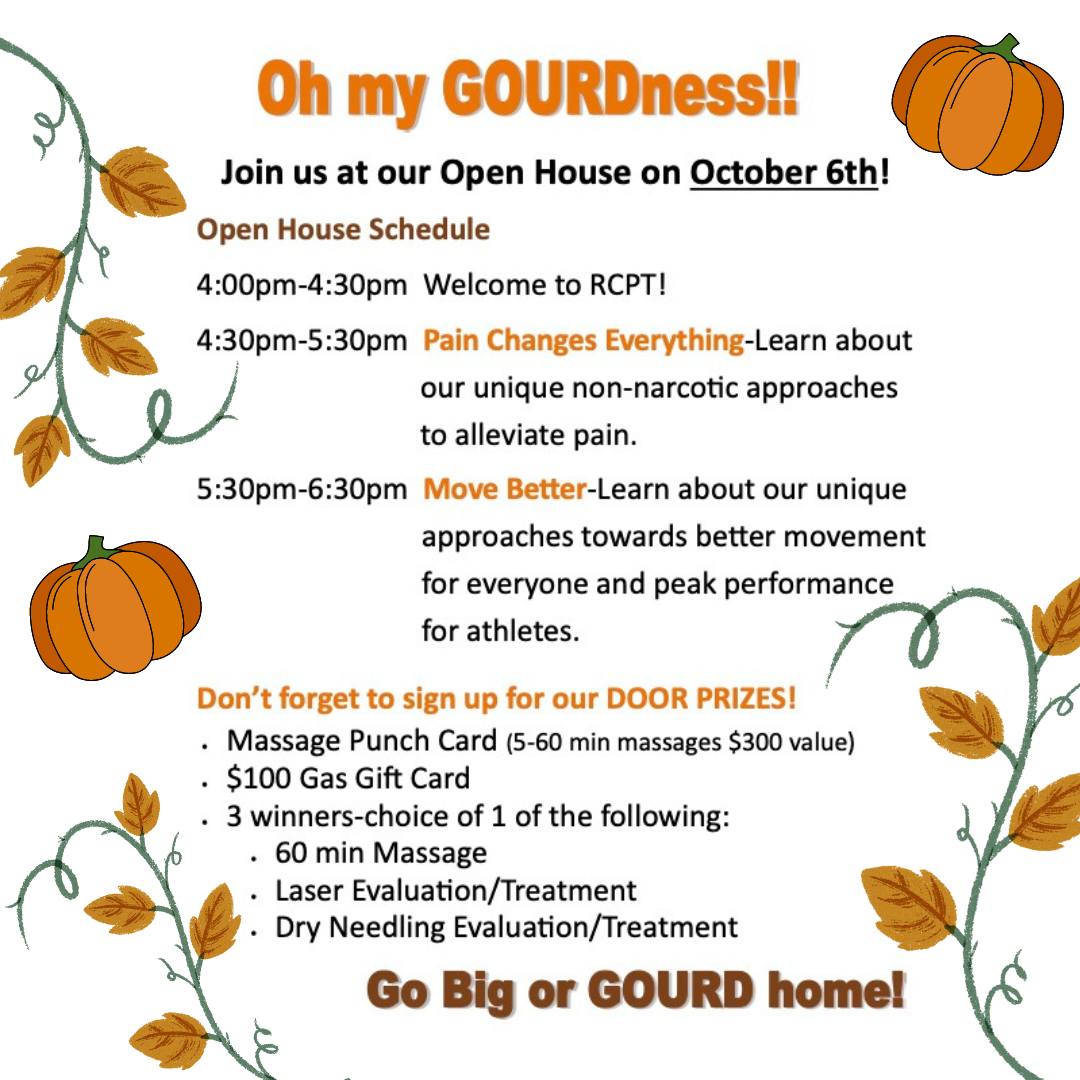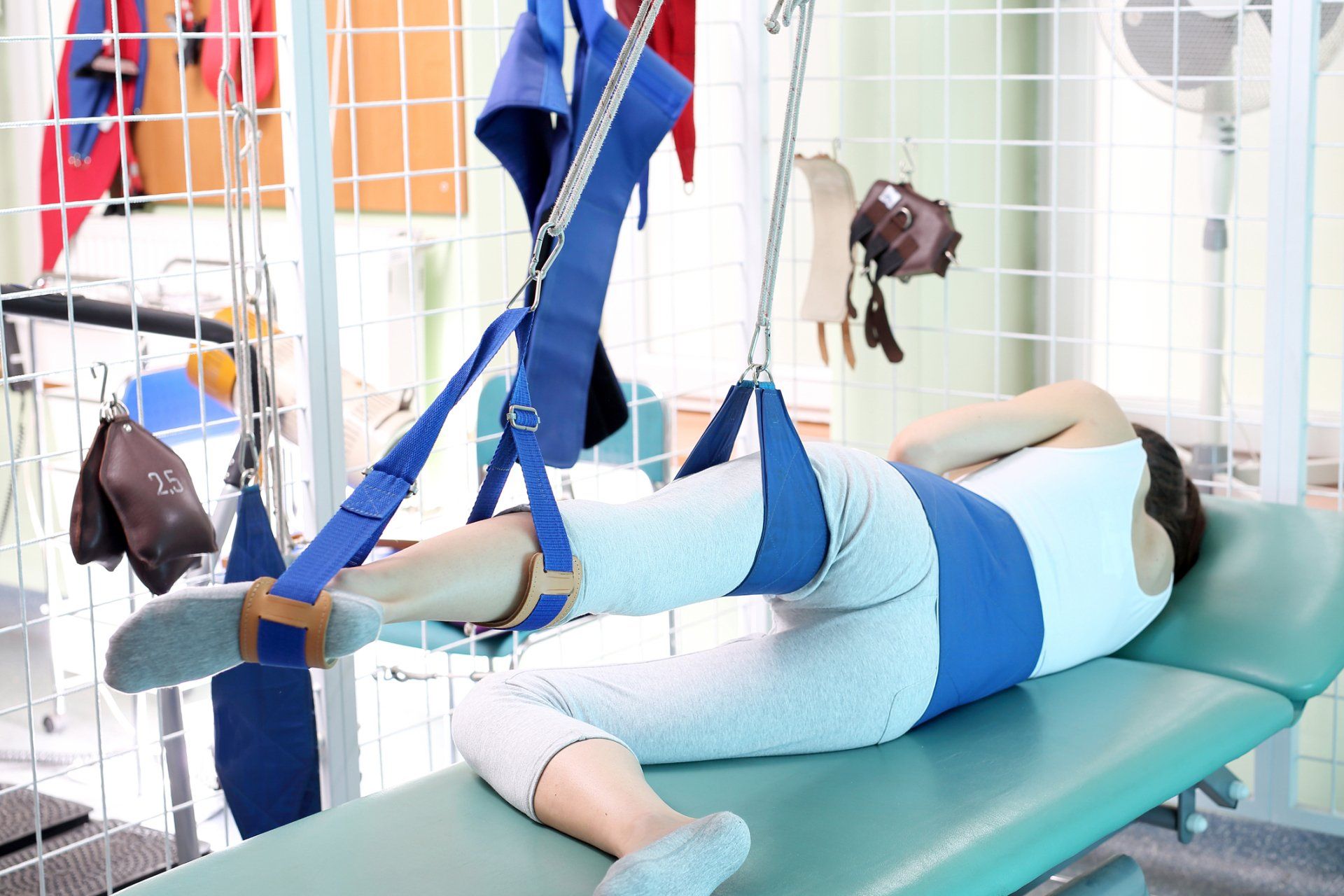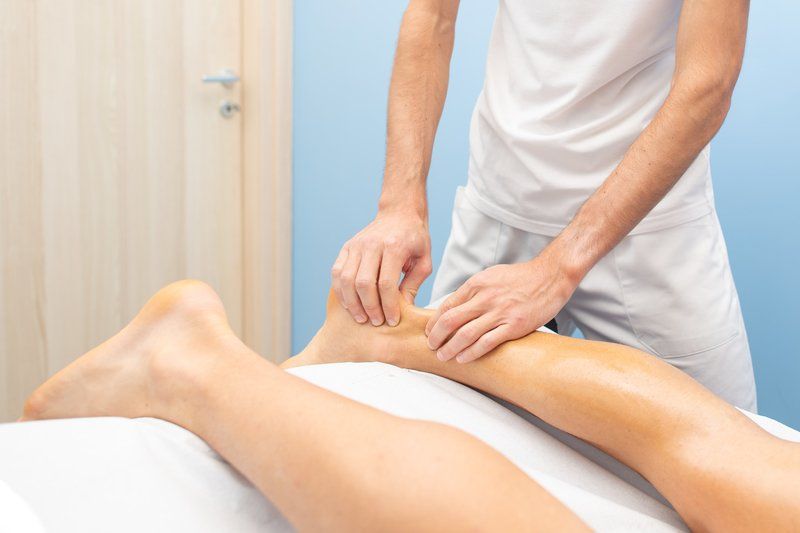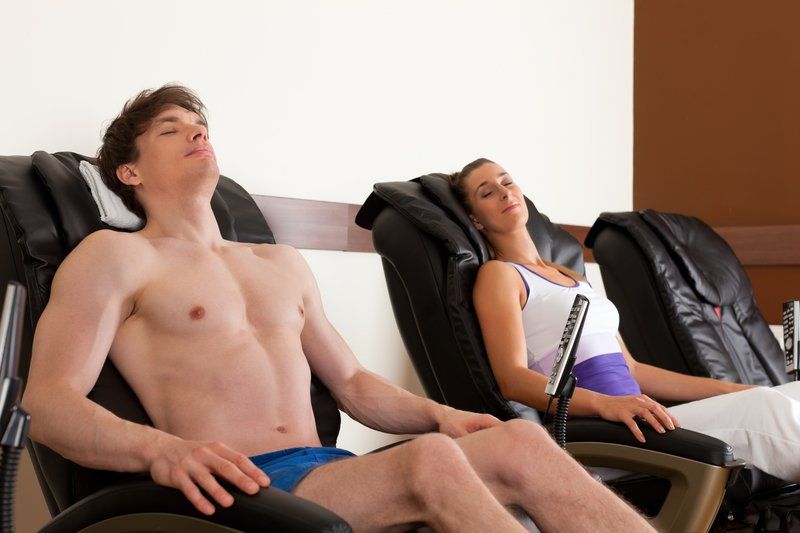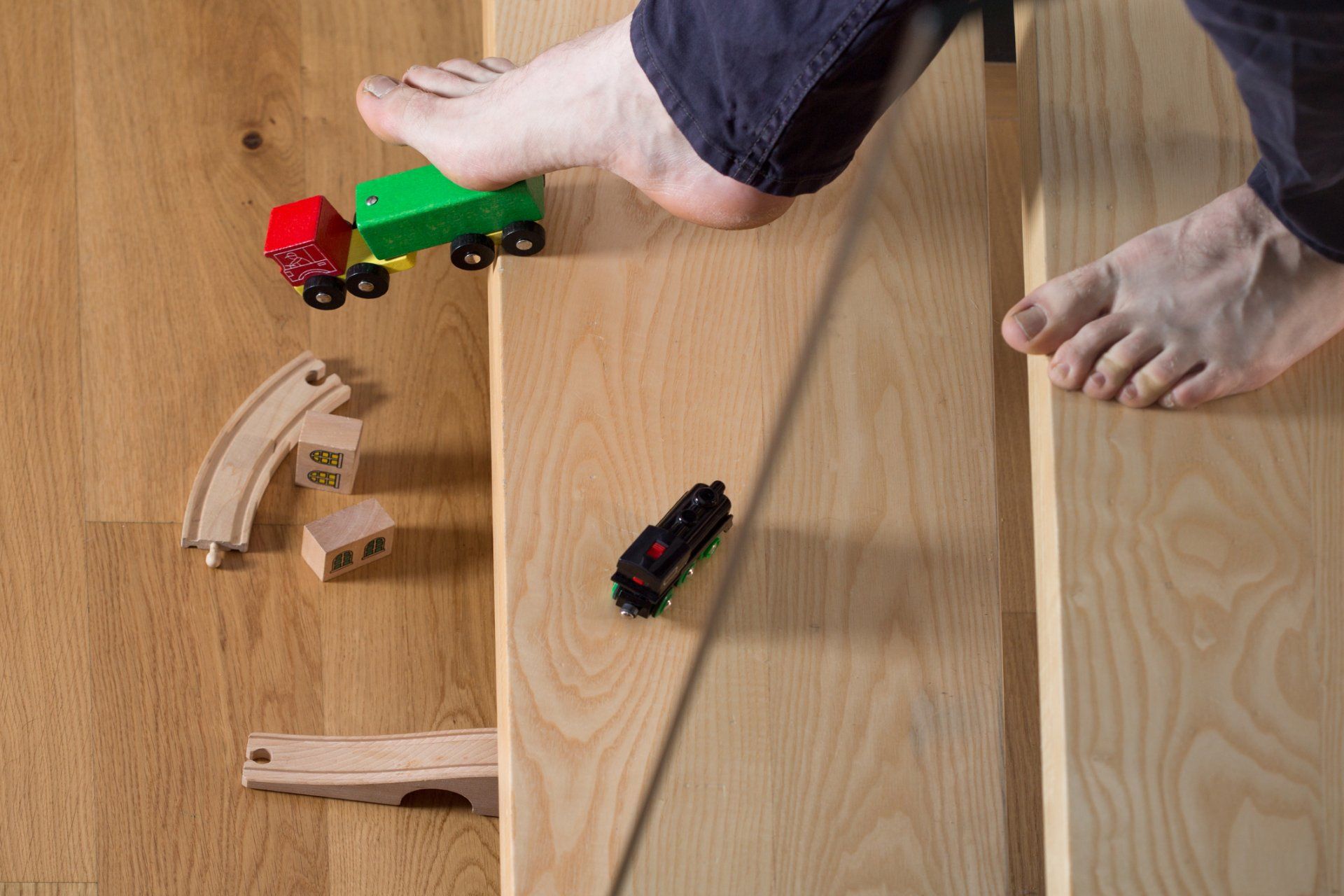Physical Therapy for Sprained Ankles
Dotcom Design • May 10, 2019
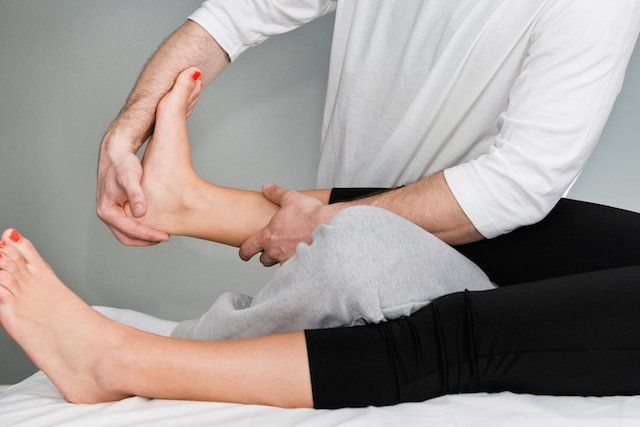
You suffered an ankle sprain while working out or just while walking and you need high-quality physical therapy in Cedar Rapids, IA
to get it back into shape. However, you're worried about what this might entail and wonder if you'll be ready for it. Thankfully, this type of treatment is by no means a significant challenge and should be something that just about anybody can do with the right therapist helping them.
Range of Motion Exercises to Consider
Range of motion exercises are one of the best ways to manage an ankle sprain and creates the most durable front for your physical therapy. These exercises begin after the injury and help to keep your ankle from healing too stiffly. Typically, they are straightforward to perform but may be among the most painful because they will be occurring while your ankle is still healing and recovering from injury.
For example, you'll need to put your ankle on ice at least five times a day while stretching your ankle in a variety of ways. For example, some therapists suggest tracing the alphabet with your toe 1-3 times during these exercise routines to challenge your ankle and keep it secure. You can also sit in a chair with your foot on the floor and move your knee side to side while keeping your foot flat.
These actions help to stretch the injured tendons and muscles gently and in a way that prevents injury. Just as important, these exercises keep your foot from injuries or other problems while you heal. For example, your tendons might heal stiffly if you don't exercise them regularly and could end up tearing again more quickly if you don't follow these simple workout routines.
Stretching Routines to Improve Flexibility
Stretching is similar to range of motion but more advanced than that physical therapy
option. Simply put, stretching goes beyond basic range of motion and improves it. These exercises should also be done while your ankle is healing but within reason. Don't push yourself too hard if you pain ripples through your ankle at any time. Stay patient and use common sense to avoid any complications.
A few ways that you can increase your flexibility include simple towel stretches. This requires sitting with your leg straight in front of you and placing a rolled towel under the ball of your foot. Pull the towel towards you with your foot while keeping your knee straight to work on your ankle's flexibility. You typically need to perform this action for about 15-30 seconds about 2-4 times a day to get the best results, but the time may vary depending on the severity of your injury.
Calf stretches also help to increase your ankle flexibility and make your recovery more accessible and more complex. Typically, this exercise starts by facing a wall and placing your hands on it at about eye level. Put your leg a step behind you to stretch the ankle and carefully bend the back heel towards the floor and the knee along with the stretch. Go down as far as you feel comfortable without triggering pain in your injured ankle. Stop the moment you feel jabbing pains and add ice to your ankle if it starts to swell.
Strengthening Workouts to Stay Fit
While you are working on stretching your ankle, you will eventually work to strengthening the muscles. This part of recovery typically doesn't occur until you feel comfortable standing on your ankle and don't feel any pain while doing do so. At this point, your doctor will suggest that you start performing 8-12 repetitions of various ankle exercises at least two times a day to improve your strength. As always, track how you feel during these routines to ensure that you aren't pushing yourself too hard.
Like other types of ankle exercises, it typically involves putting a force against your ankle and forcing you to move against it. For example, your physical therapy may include placing your foot against the wall and pushing outward against it for six seconds or so at a time. This might sound like a straightforward exercise to many readers, but it will challenge your ankle strength in many ways.
Beyond this approach, you can also sit on the floor with your feet together and press them together for six seconds at a time. This approach utilizes what experts call dynamic tension, which pits muscles against muscles for maximum gains. As always, make sure that you feel pain-free during this process and stop if any shooting pains or swelling appears in your ankle during this routine. Stop immediately if you feel this problem and put ice on your ankle to minimize swelling.
Balance and Control Methods to Stay Stable
Often, you'll start working on your balance and control at the same time you're working on your strength. However, some therapists may hold off on these routines if they believe that your injury is too severe. Most of the time, though, you're likely to need to improve your balance while you're increasing your strength to make your ankles more capable of holding your weight. These routines also keep your ankle from giving out while you walk or causing balance issues while you stand.
One of the easiest ways to improve your balance is to place your non-injured leg on a balance ball and balance yourself on your injured ankle. Make sure to have a chair or a wall nearby that you can grab in case you start to lose your balance or need extra support. Repeat this exercise for 15-20 seconds at six reps per session to get the best results. Try 1-2 sessions to start and expand as needed.
Eventually, you can expand your physical therapy and balance exercises in more challenging ways. For example, you can stand on one leg with your hands out for balance and your eyes open. Once you master this exercise, you can close your eyes and put your hands to your side. And if you get good enough at this routine that you can do it without strain, you can probably stop your balance exercises – your ankle is likely back to normal. But make sure to talk to a doctor making any of these changes.
Work with a Physical Therapist Today
So if you suffered from an ankle sprain in Marion, Cedar Rapids, or Hiawatha, Iowa and you need physical therapy
help, please don't hesitate to contact us at Rec Center Physical Therapy right away to learn more. Our professionals will find a treatment method that works for you and which improves your strength, flexibility, and balance without causing any more unneeded injury to your already suffering ankle.
Keeping up with physical therapy during the holidays is tough. There are so many other things to do - cooking, parties, shopping, travel, and visiting with family and friends. But if you're in physical therapy over the holidays, there's a reason. You're having pain, or not moving as well as you want to. These issues place limitations on your life, which are going to affect your ability to do things - like cooking, partying, shopping, traveling, or enjoying time with friends and family. So even though keeping up with your PT this time of year is tough, it's important. That's why we're going to give you our best tips to help you through the holidays. Plan Some of what makes the holidays challenging is the crazy schedule. To survive this, you're going to have to plan ahead. We're not just talking about appointments on your calendar, either (although those are important). Here are some things to think about planning ahead: Your PT appointments Your schedule is busy during the holidays. So is your PT's. Plan and schedule your appointments in advance. You'll get the times and days that work best for you, and you'll already have your PT appointments in your calendar to plan other things around. Your exercise Hopefully you have a regular time to exercise. With the holiday mania about to shake up your routine, that time may no longer work. Think about when you're going to exercise ahead of time and you'll stay consistent. Your diet Healthy eating often gets derailed during the holidays. Putting low quality fuel into your body won't help you feel better. Think about planning what you're going to eat ahead of time. We're not saying to skip every holiday treat offered to you, but maybe think about which ones you really need to have, and which ones you can skip in advance. It makes saying "no thanks" to that third slice of fruitcake easier. Modify We're realistic. We understand that life isn't the same during the holidays as it is during the rest of the year. That's part of what makes this time of year special! With that in mind, our next set of tips focuses on making modifications to help you get through the holidays successfully. Your PT Plan When you planned your PT appointments out well in advance, you might have run into some challenges. Talk to your therapist about how you might be able to modify your plan of care through the holidays to make it all work. Maybe you're going to PT three times a week and you can only come twice a week for a week or two. Plan this sort of thing in advance with your PT and you can work together to come up with the best plan. Your exercise Exercise is so important, it made our list twice. Now that you know when you'll exercise, you might have to modify your routine to make it fit. Again, we recommend talking with your PT to see what you can do. Maybe your home exercise program can be modified so you can do everything in the kitchen during downtime when you're cooking up your holiday feast. Maybe you can reduce the number of exercises to focus on maintaining the gains you've made until things settle down. Your schedule In your planning in advance (see how important it is?) you might have found that your normal routine wasn't going to work. If your PT appointments or exercise time is usually right after work and you've now got commitments during that time, maybe you can move them to the morning before work. If you've been exercising outside, the shortened days may move you into the gym. Be flexible and consider temporarily modifying your schedule and your routine to make it work better during the holiday season. You can always go back to your previous routine after. The holidays are a special time of year. Keeping up with your health and your physical therapy can be challenging during this time. But you don't have to fall behind. With some planning and flexibility, you can stay healthy, survive the holidays and head into next year with good momentum!

With winter right around the corner, now is a great time to start thinking about what winter sport is right for me. A number of you have been enjoying the sport of hockey or are possibly curious about the best sport EVER. Hockey is played indoors on NHL or Olympic sized sheets of ice in arenas, or out on the small ponds or flooded areas in your local parks that the city has provided. More and more people are enjoying this dynamic sport. Hockey provides a great total body workout that will challenge your balance, muscles, and general cardiovascular system. Let's look at some of the many benefits.



